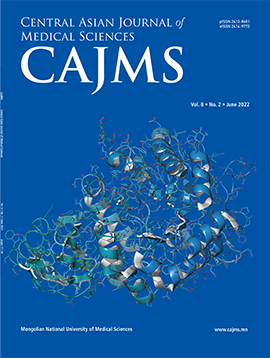Assessment of Blood Lead Levels and Associated Risk Factors Among Children in Ulaanbaatar, Mongolia
DOI:
https://doi.org/10.24079/cajms.2016.02.011Keywords:
Air Pollution, Environmental Monitoring, Child, Lead, MongoliaAbstract
Objectives: The objectives of this study were to determine BLLs with a LeadCare II analyzer in children living in Ulaanbaatar, Mongolia and to identify potential risk factors influencing their BLLs with a lifestyle and residential environment questionnaire. Methods: A total of 153 children aged 6-8 years old were tested in 2014. Results: The geometric mean BLL was 5.3 µg/dL (95% CI: 4.9 – 5.7 µg/dL) and 69.3% of the children had blood lead levels ≥5 μg/dL (the United States Centers for Disease Control and Prevention’s current reference level). Factors that were significant (p<0.05) predictors of BLL in a multiple linear regression model were sex, age, father’s education level, and father’s job type. The BLL from this study in 2014 shows a 60% decrease since a prior 2005 study, likely due to the ban on leaded gasoline in the country. Conclusion: Academic performance was significantly influenced by BLL, indicating that actions still need to be taken to reduce lead exposure in Ulaanbaatar.
Downloads
306
Downloads
Published
How to Cite
Issue
Section
License
Copyright (c) 2016 Mongolian National University of Medical Sciences

This work is licensed under a Creative Commons Attribution-NonCommercial 4.0 International License.




